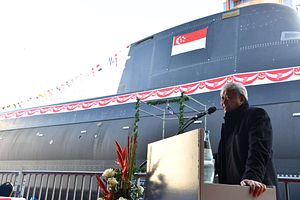On February 19, Singapore announced its budget allocation for 2019. Though the focus was primarily on domestic issues amid continued speculation about when the country’s next general election will be held, the country’s allocation for the defense realm also bears careful watching in terms of where the Southeast Asian state is in its security thinking at present as well as what this means for its future outlook.
As I have noted before in these pages, Singapore has consistently spent significant amounts on its defense and possesses one of the most capable and modern militaries in the region, both because of the vulnerability it perceives as a small city-state as well as its economic success, which affords it the resources to do so.
Yet at the same time, a series of trends, including occasional economic challenges increasing domestic scrutiny over the amount of defense spending, have led officials to factor these considerations into how the country allocates and manages defense spending. To take just one example, the 2017 budget had cast defense as one of four ministries where a two percent downward adjustment across ministries would be phased in over several years.
This week, Singapore’s defense budget was announced as being at 15.5 billion Singapore dollars ($11.4 billion). The figure, disclosed along with a budget speech given by Finance Minister Heng Swee Keat, amounts to about 19 percent of total government expenditures and around 3.3 percent of national GDP. The total amount Singapore is spending on Defense, Home Affairs, and Foreign Affairs ministries – within the wider umbrella term used of “defense, security, and diplomacy” – amounts to $22.7 billion or 28.3 percent of the $80.3 billion total budgeted expenditure.
Relative to last year, the amount budgeted for defense spending constitutes a 4.8 percent increase. This is higher compared to the previous initial increases over the past two years of 1.6 percent and 3.7 percent (the previous two years witnessed higher increases of between 5 and 6 percent), and also a bit higher than the 3 to 4 percent rise range that Defense Minister Ng Eng Hen had mentioned a few years ago that would be needed to keep pace with inflation and to respond to a range of security challenges. In his remarks, Heng provided a justification for this increase building off of previous articulations, noting the security challenges Singapore faces including terrorism and cybersecurity and calling the defense allocation “significant but indispensable.”
While the initial allocation amount gives us a rough sense of where Singapore is relative to previous years, more specific indications will become clearer once we see how the country actually looks to invest it, including in terms of upgrading capabilities and acquiring new ones. This will also be occurring within a changing domestic and international context, with a range of variables including speculation about the date of its next general election which is due by early 2021.

































